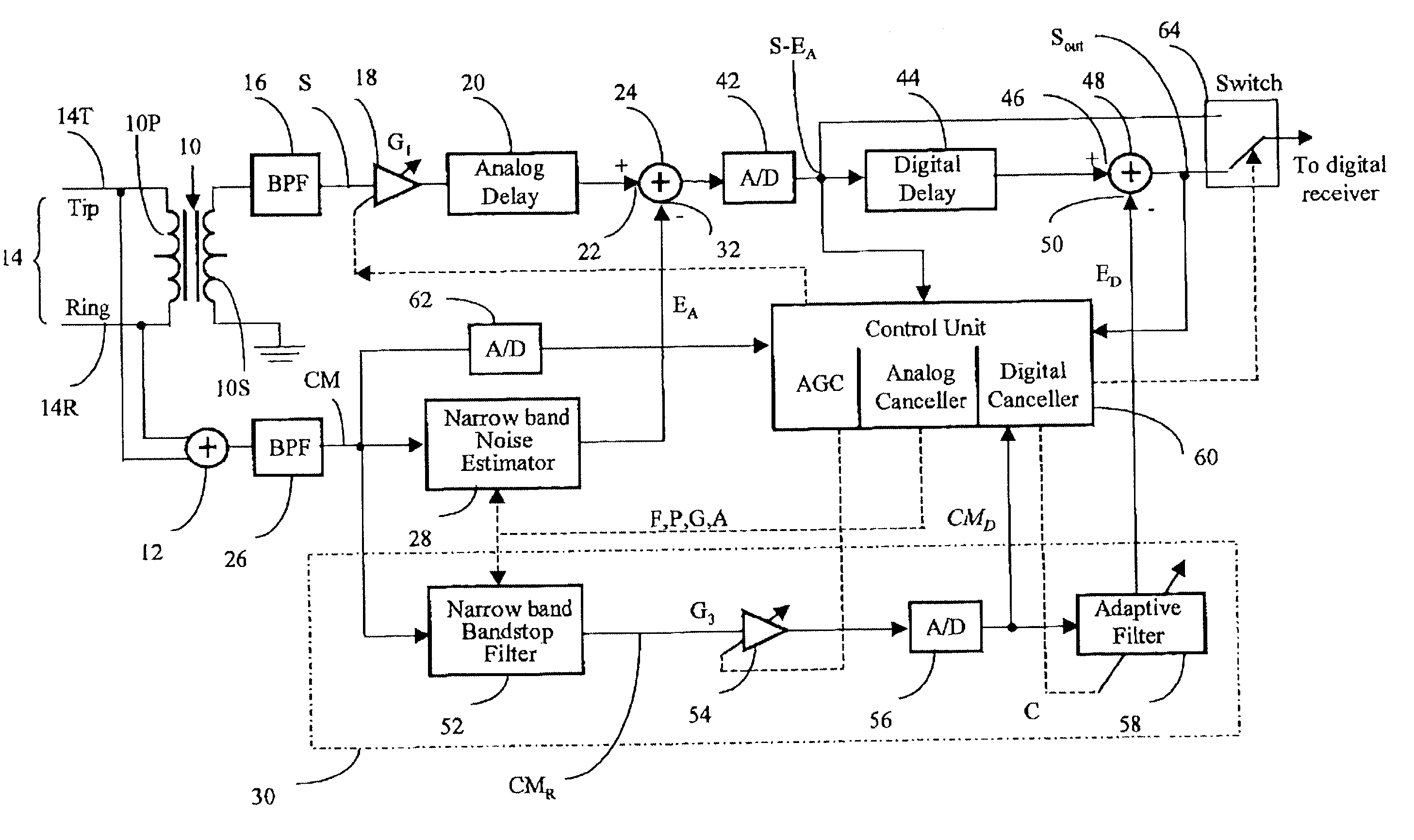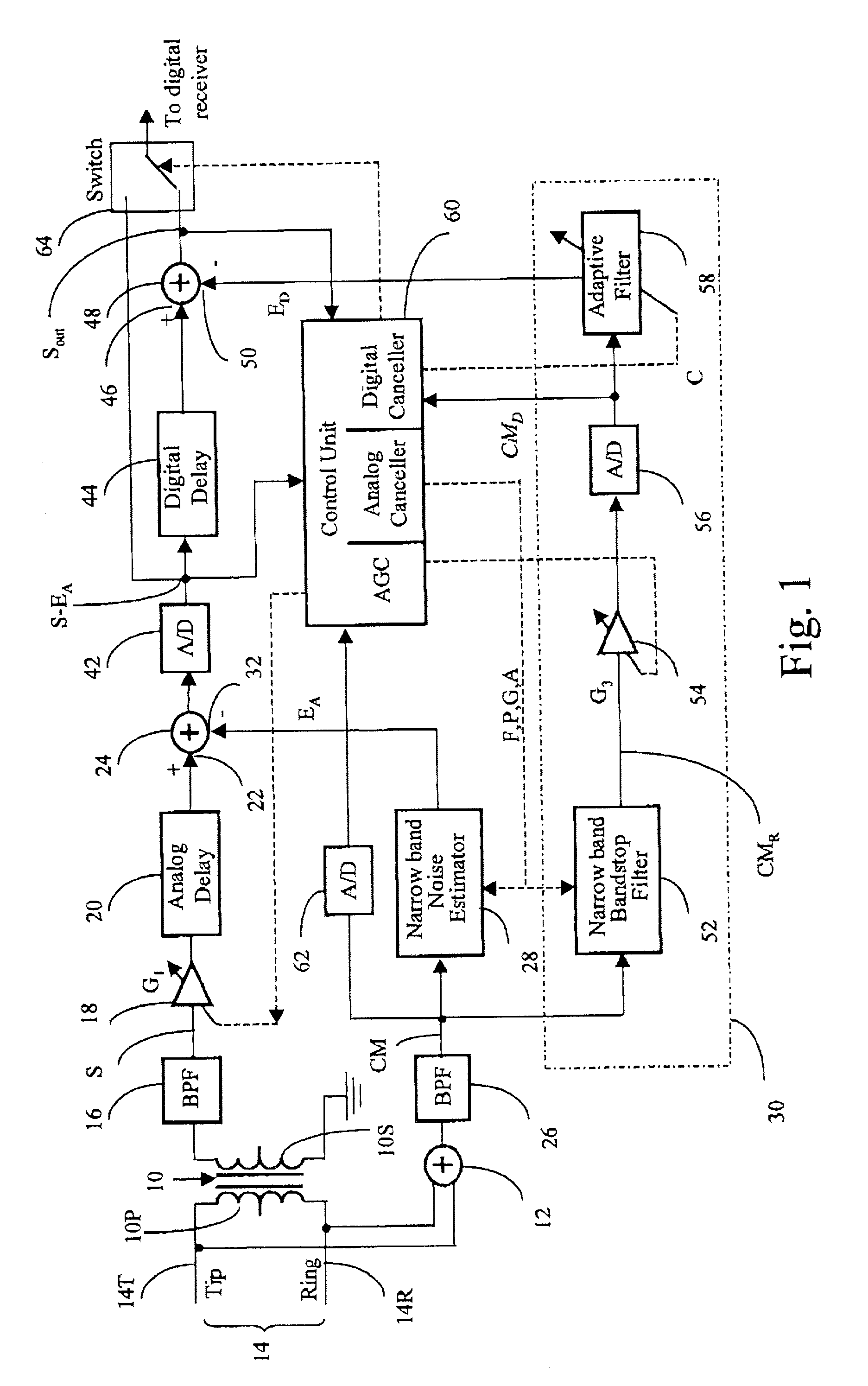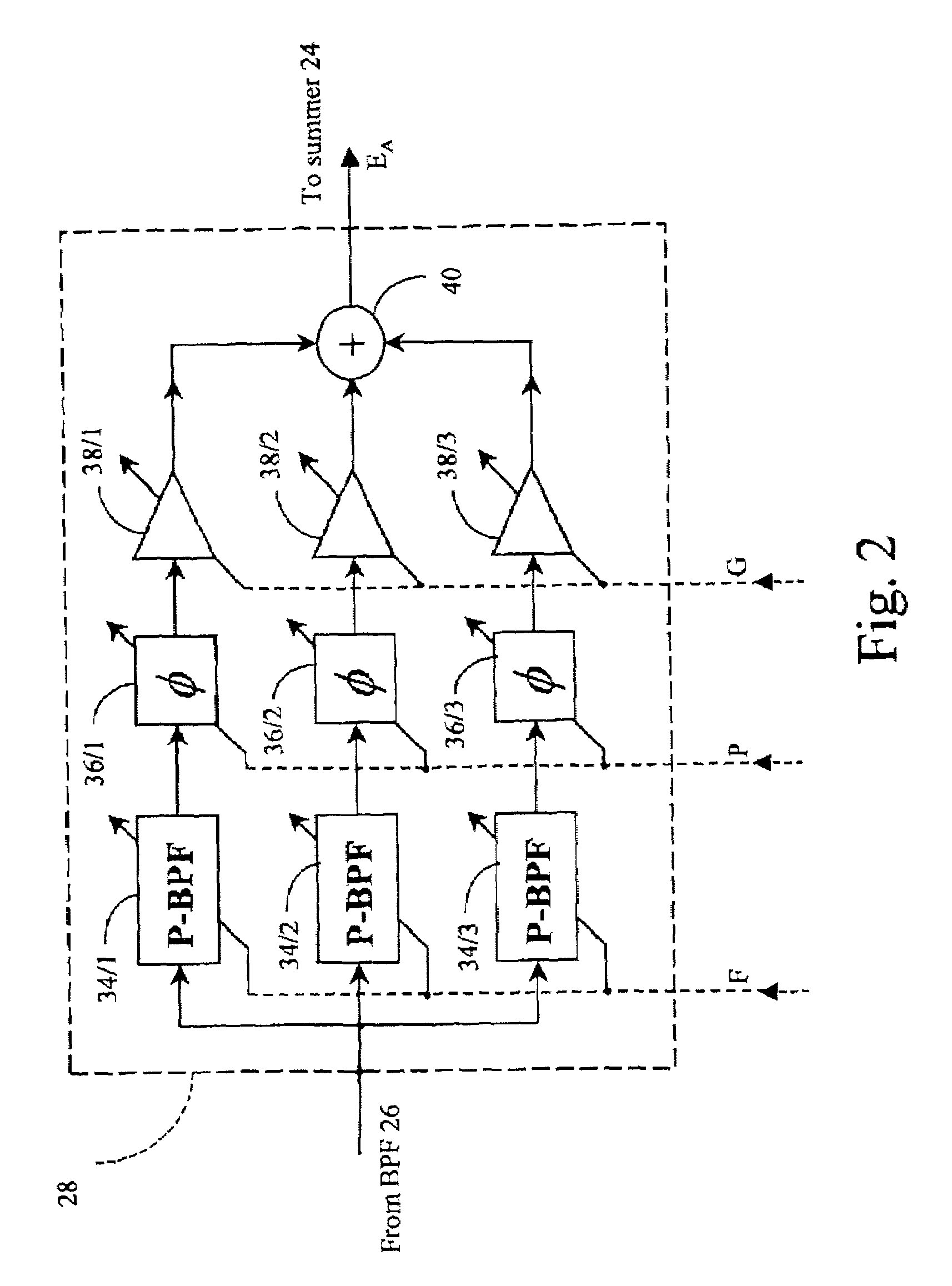RFI canceller using narrowband and wideband noise estimators
a noise estimator and narrowband technology, applied in the field of noise cancellation, can solve the problems of conductors being untwisted, and one conductor to have greater leakage to ground
- Summary
- Abstract
- Description
- Claims
- Application Information
AI Technical Summary
Benefits of technology
Problems solved by technology
Method used
Image
Examples
Embodiment Construction
[0023]In the drawings, identical or corresponding items in the different figures have the same reference numeral, with a suffix to indicate a modification, where appropriate.
[0024]FIG. 1 illustrates, schematically, a communications receiver input stage which has input means for extracting differential and common mode signals from a communications channel, first and second noise estimation means for deriving first and second noise estimate signals, respectively, from the common mode signal, and means for subtracting the first and second noise estimate signals from the differential signal to produce a noise-cancelled output signal. The input means comprises a hybrid circuit 10 for extracting the differential signal and a summing device 12 for extracting the common mode signal. The hybrid circuit 10 is shown as a hybrid transformer, but an electronic equivalent of the kind used in telecommunications systems could be used instead. The hybrid transformer 10 has its primary winding 10P co...
PUM
 Login to View More
Login to View More Abstract
Description
Claims
Application Information
 Login to View More
Login to View More - R&D
- Intellectual Property
- Life Sciences
- Materials
- Tech Scout
- Unparalleled Data Quality
- Higher Quality Content
- 60% Fewer Hallucinations
Browse by: Latest US Patents, China's latest patents, Technical Efficacy Thesaurus, Application Domain, Technology Topic, Popular Technical Reports.
© 2025 PatSnap. All rights reserved.Legal|Privacy policy|Modern Slavery Act Transparency Statement|Sitemap|About US| Contact US: help@patsnap.com



